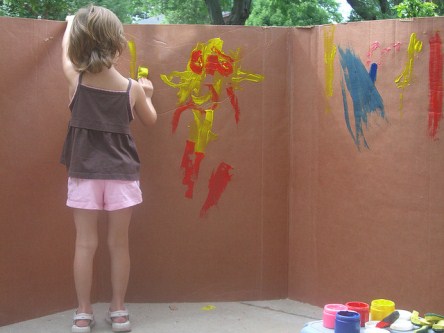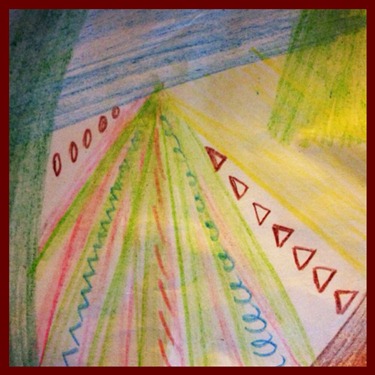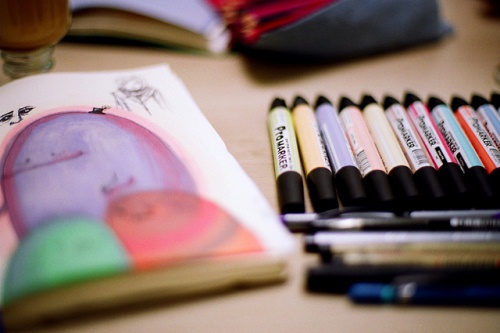Have you noticed yourself doodling something mindlessly on a piece of paper that’s lying around? Maybe while you are on the phone. Or in a lecture.
Have you ever wondered if there is anything more to doodling?
As children, long before you learn to express yourself through language and words, you see the world in terms of images and symbols. Bright crayons, boxes of paints and colourful books where pictures told stories. As a child, you probably even (much to the dismay of your parents) doodled messily on walls!
Children are often able to express themselves through these images and drawings. But, as you grow up, you increasingly start learning to make use of spoken and written language to interpret what you observe around you.
Slowly, you start feeling distanced from images. You see them dimly, if at all, and never focus on them long enough to be able to comprehend them. Chances are that you also stop depicting anything through symbols or drawings; you come to realize that your drawings are being evaluated as ‘good’ or ‘bad’. You start believing that if you can’t draw like an artist, then this form of expression is not meant for you.
What ends up happening is that you alienate yourself from this beautiful visual dimension of your mind, as you get conditioned to believe that it is meant exclusively either for children or for artists. Don’t most of you feel intimidated when asked to draw? “I can’t draw well ya” “Do I really have to draw?” “I’ll make a mess, forget it”. Sounds familiar? The reason why you feel like this, is because you, like most other people, fear being evaluated. You may not be able to express yourself freely through drawing because of this evaluation (sometimes this is self-evaluation too). You are likely to feel uncomfortable in this space because most people view art as making ‘perfect’ strokes to create ‘perfect’ images.

So, let’s break this notion. Doodling, as opposed to drawing, is an activity where you can fearlessly express, without the pressure of having to meet any external standard. A doodle represents something that has meaning exclusively for you. It does not have to mean anything or be liked by anyone or anything that is external to you. Doodling is a free flowing expression of the visual imagination, as journaling is a free flowing expression of verbal thoughts. More than anything else, it can also be fun!
Using Your Doodles To Look Within:
The dictionary definition of doodle is to scribble or make a rough drawing absentmindedly. This mental health week, let’s try and see if we can make sense of this activity more ‘present-mindedly’!
Let us now see when and how you can doodle, and how it can aid you in looking within-
There can be times when you find yourself not having any words to understand or describe how you are feeling- whether happy or sad, pleasant or unpleasant. At such times, you can just grab a piece of paper, and intuitively start making doodles – whatever you feel like! Your doodle does not have to take a particular shape or form; it can be as simple as some scribbles on paper, or as intricate as you can imagine. Let your intuition guide the marks that you make on the paper; allow yourself to scribble without putting in much thought. See if your doodle wants to take a particular shape. If it does, then allow a spontaneous image to take shape. Your doodle can be abstract, or it can represent something. There is no ‘method’ for doing this activity. You can find your own ‘doodle way’ – all you need is a pen and some paper, and all that you need to do is to keep drawing on it till you feel like. You can even use different colours in your doodle. Let the choice of your colours also be intuitive, a doodle allows you to colour the sky green, and make the sun blue!
Such intuitive doodling can help in honest self-expression and in the exploration of difficult emotions. It can help you get in touch with the powerful visual dimension of your mind and imagination, and help expand your awareness. You might express thoughts and feelings that you did not even know existed! Drawn symbols can sometimes express, represent, and encompass feelings more completely than words can.
Doodling is an activity which can be ‘experienced’ and ‘felt’ rather than intellectually understood, yet it can help you develop better understanding of your own self. After completing your doodle, look at it again after sometime. Ask yourself what it means to you, it very often is trying to give you a message which only you can interpret. You will often feel more connected with yourself when you do so. Images are an indispensable part of the way human beings experience the world; when you start re-connecting with your own images, you experience increased awareness of your thoughts and feelings, and of everything around you.
I am sharing one of my doodles with you. This doodle gave me very subtle directions on how I could move forward when I felt stuck with a thought sometime back:

Go ahead, make your doodles, and do share your doodling experience with us!
Image Credit: Laura D’Alessandro (Featured Image) & julie corsi
Post contributed by: Megha Tulsiyan

